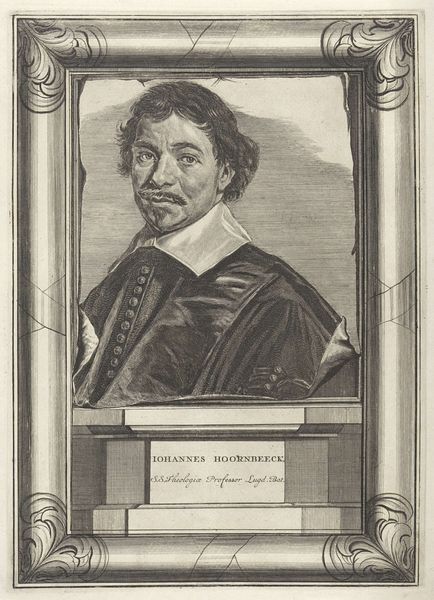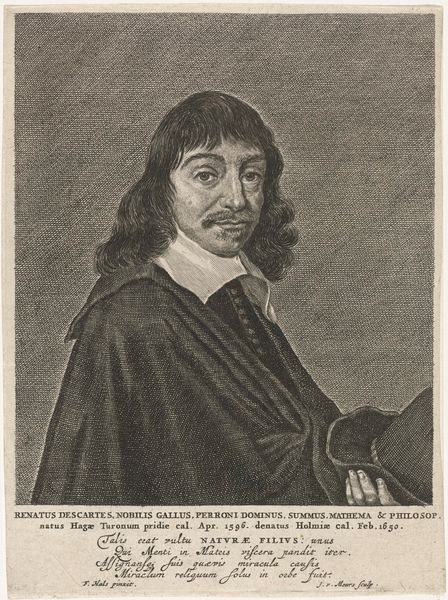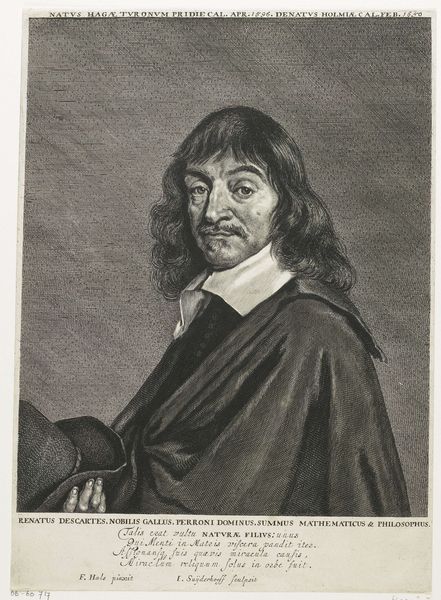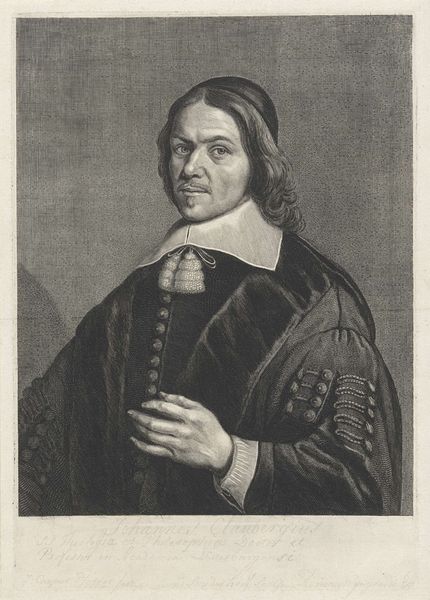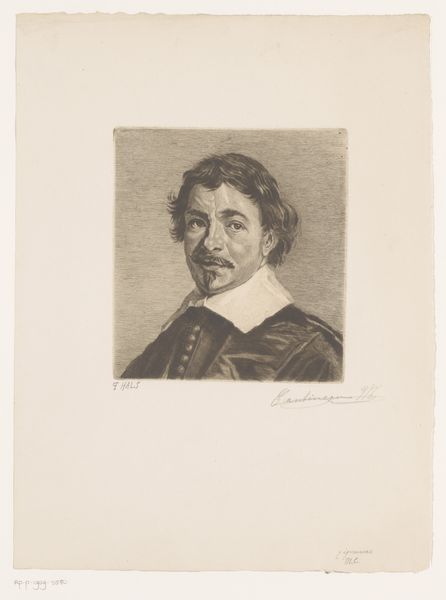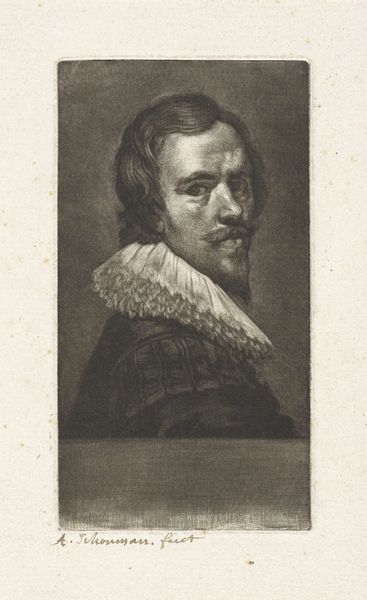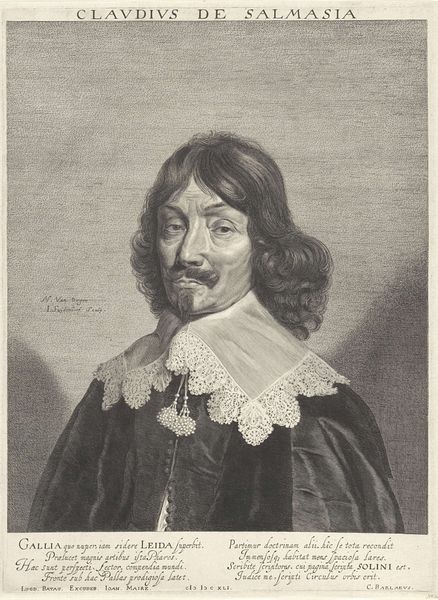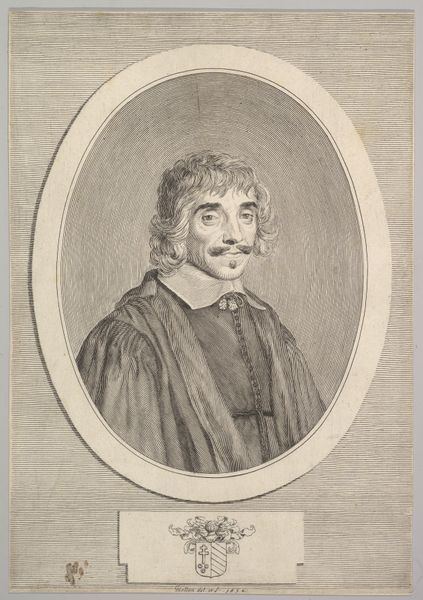
print, engraving
#
portrait
#
dutch-golden-age
# print
#
old engraving style
#
portrait drawing
#
engraving
Dimensions: height 332 mm, width 259 mm
Copyright: Rijks Museum: Open Domain
This portrait of Johannes Hoornbeeck was made in the 17th century by Jonas Suyderhoef, using engraving. This is an intaglio process, where the image is incised into a plate, typically copper, and then filled with ink to be transferred onto paper. The engraver's skill lies in the delicate manipulation of line. Notice the subtle gradations of tone, achieved through varying the density and depth of the engraved lines. The process demands meticulous labor, and the final print is a testament to both the artist's technical expertise and artistic vision. Engraving was a key technology for disseminating images and information in early modern Europe. In its capacity to reproduce images, printmaking was intertwined with social issues of labor, politics, and consumption. It allowed for relatively affordable multiples, playing a crucial role in shaping public opinion and cultural identity. Considering the material and processes involved enriches our understanding of the artwork's historical context, and challenges traditional hierarchies between art and craft.
Comments
No comments
Be the first to comment and join the conversation on the ultimate creative platform.
